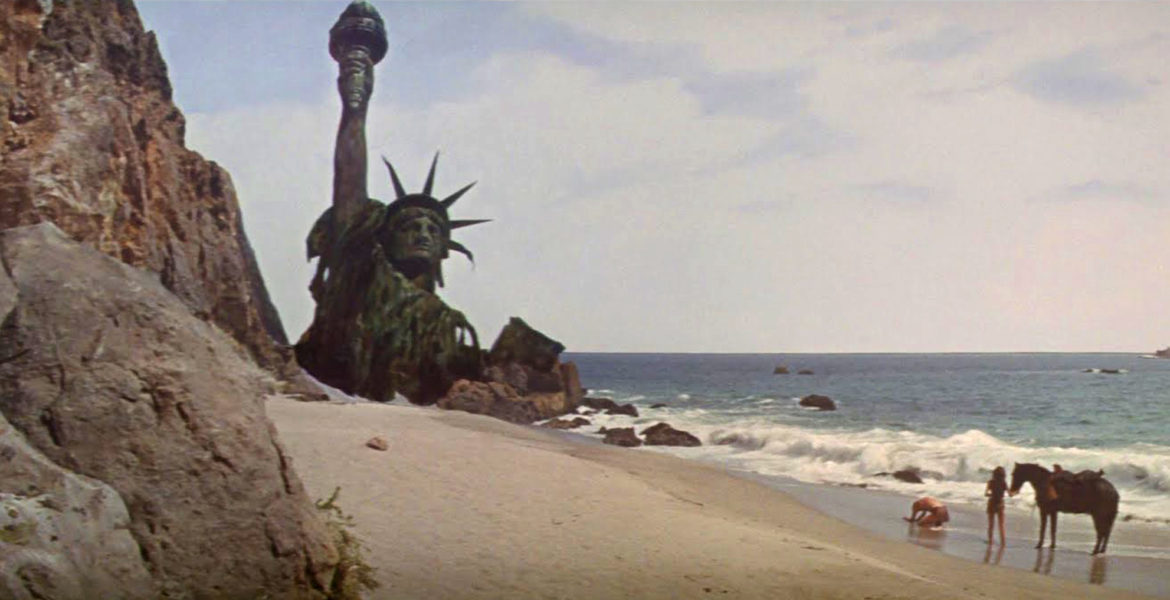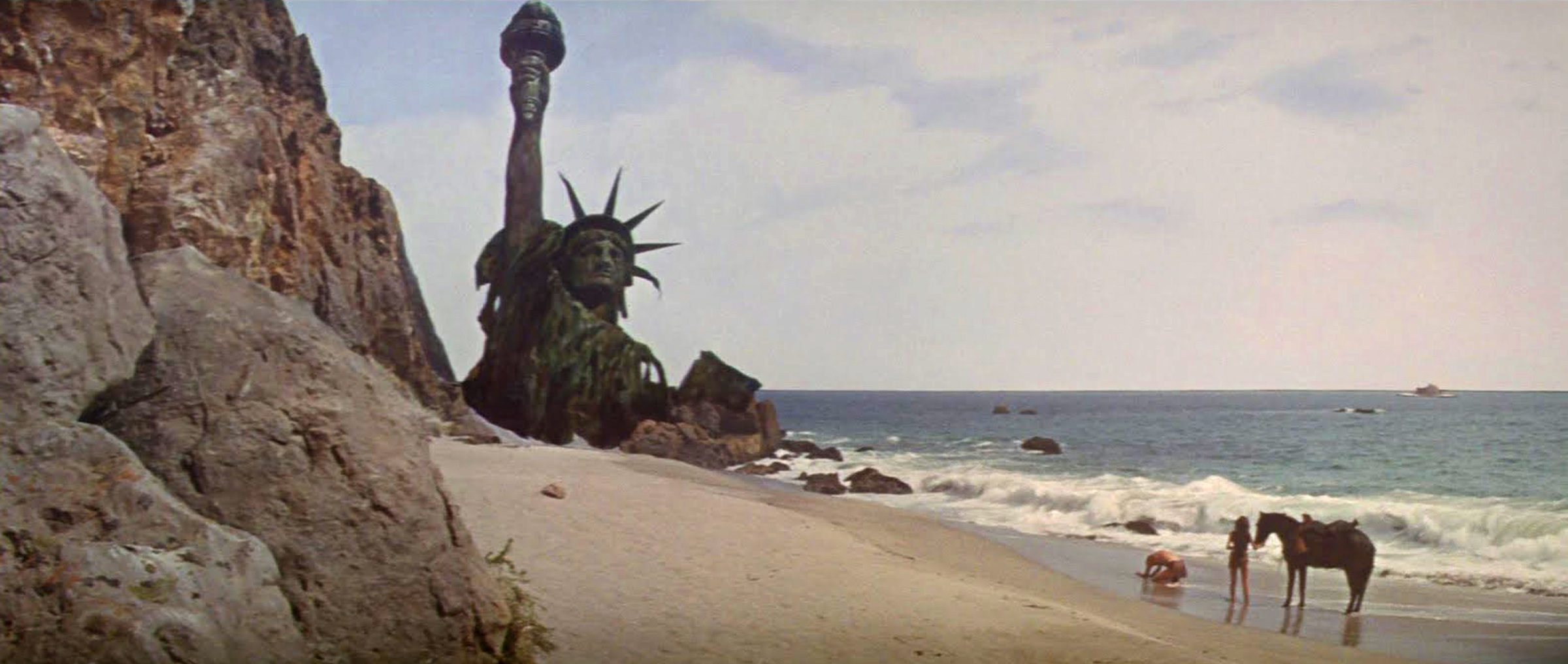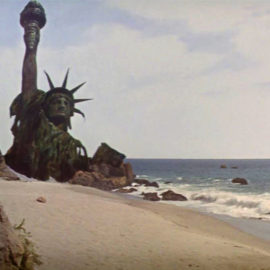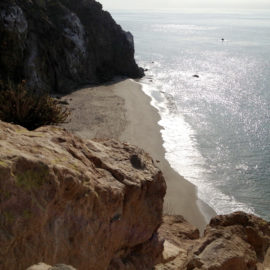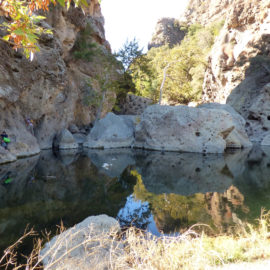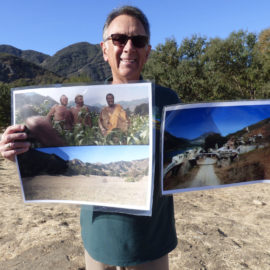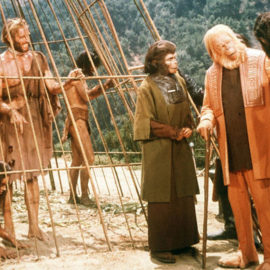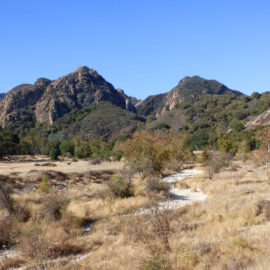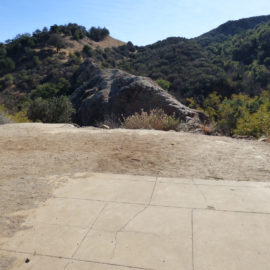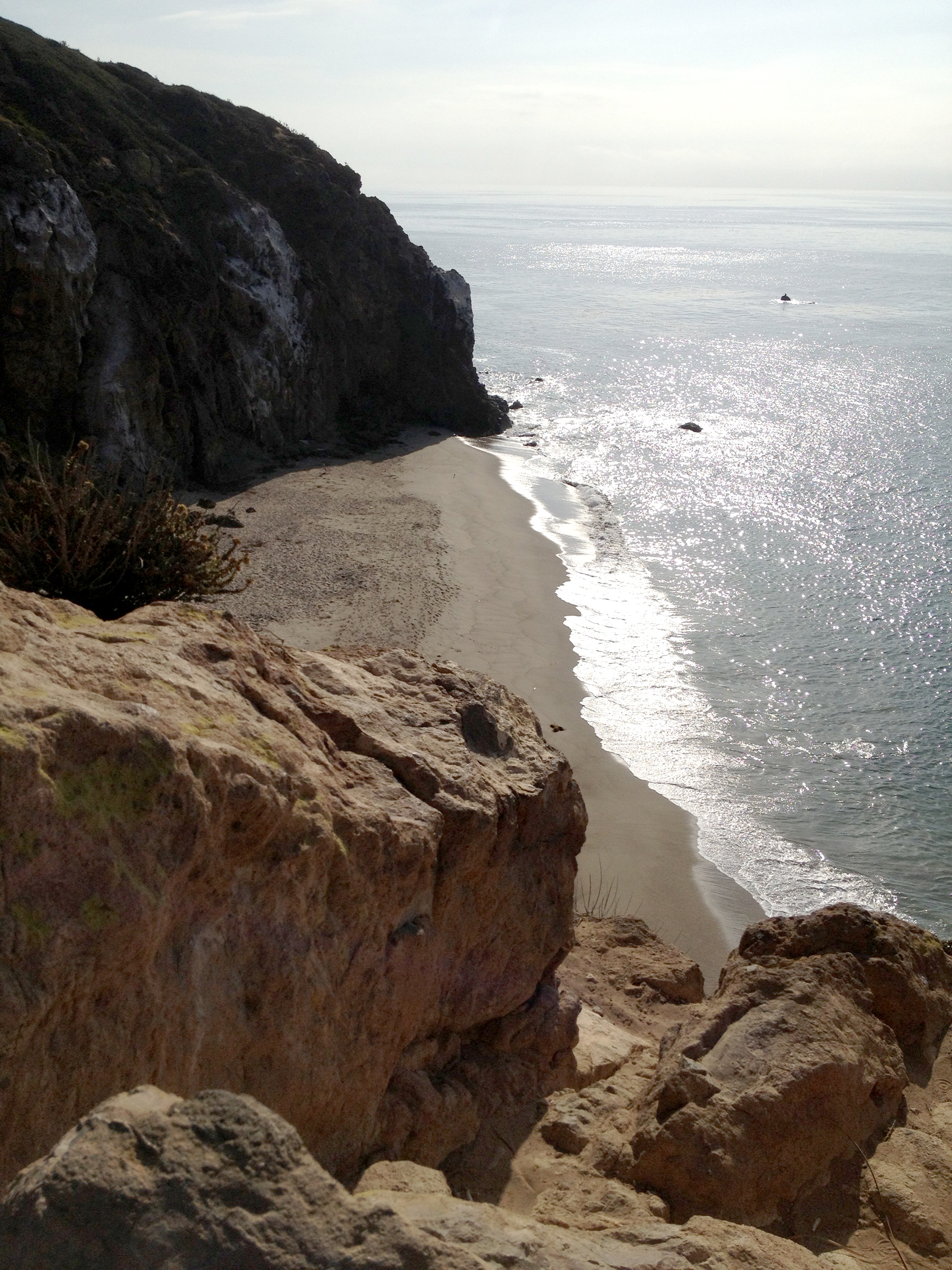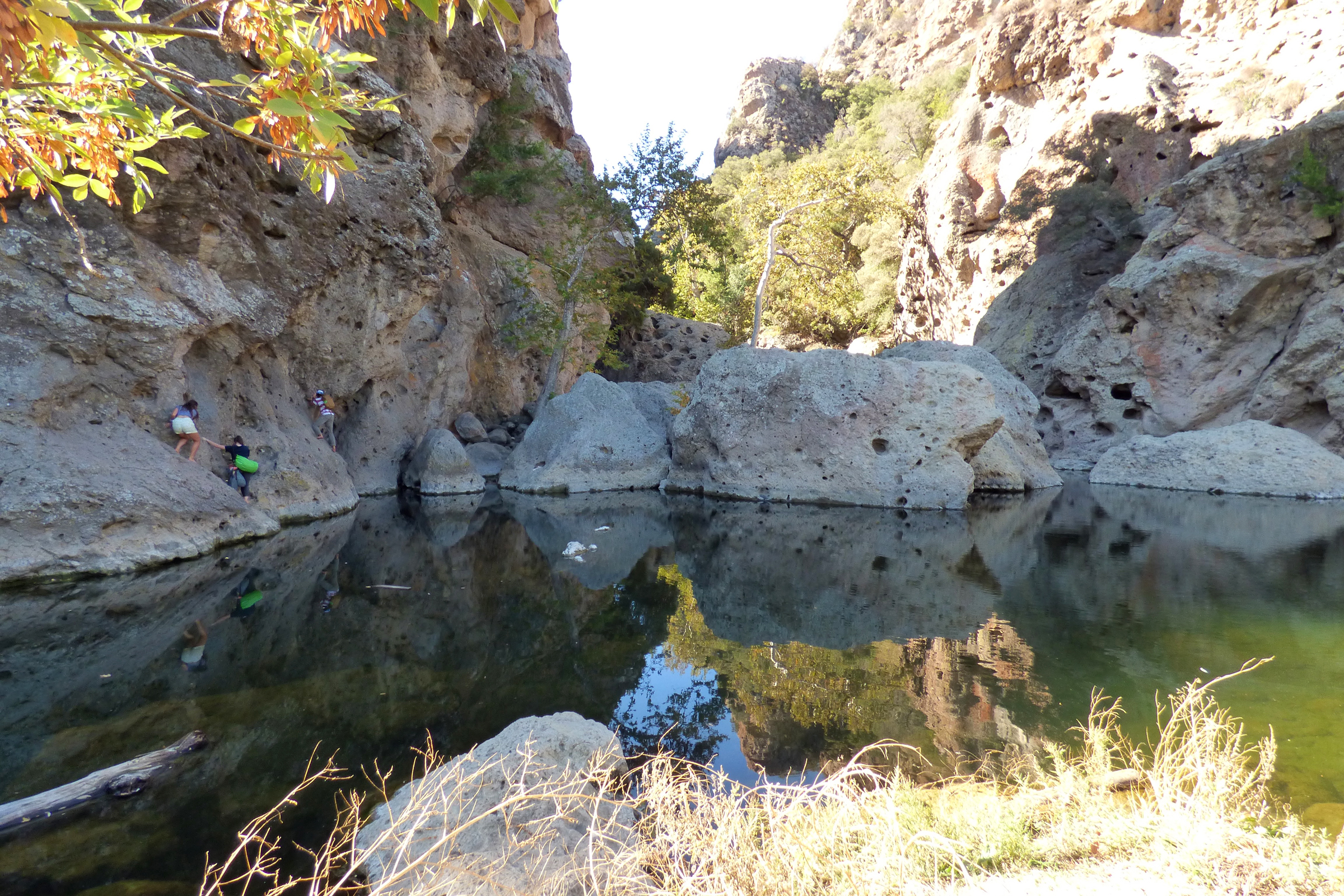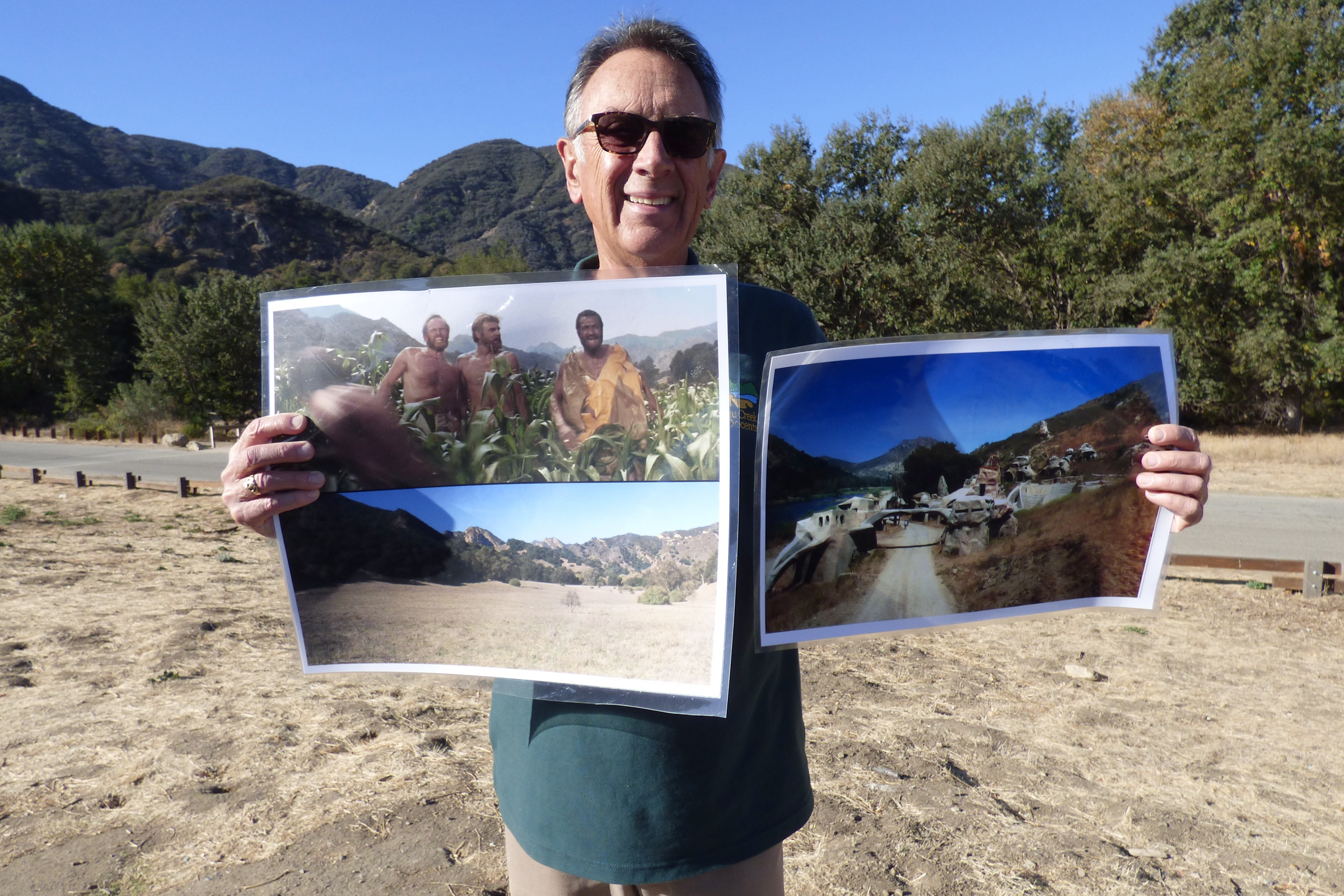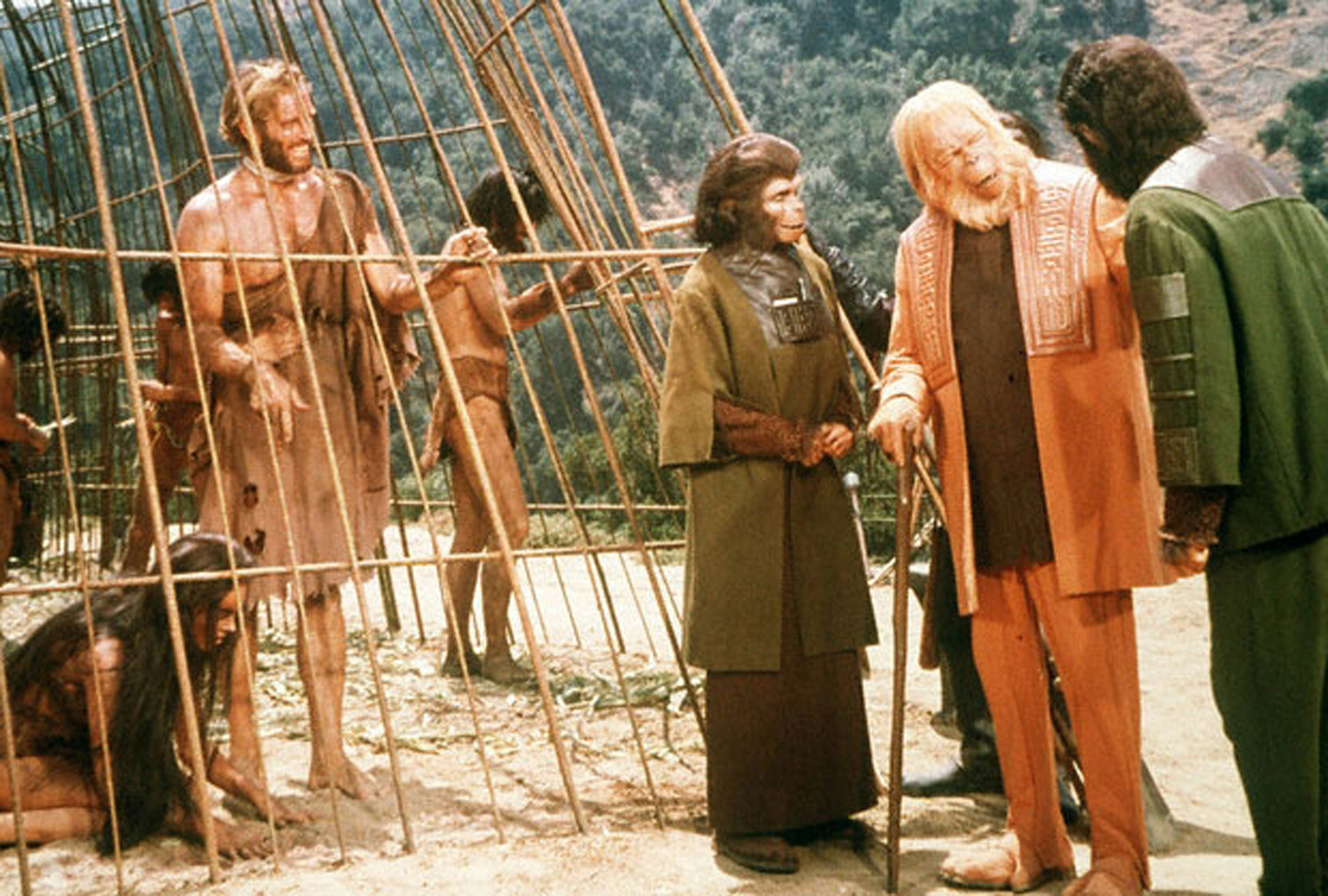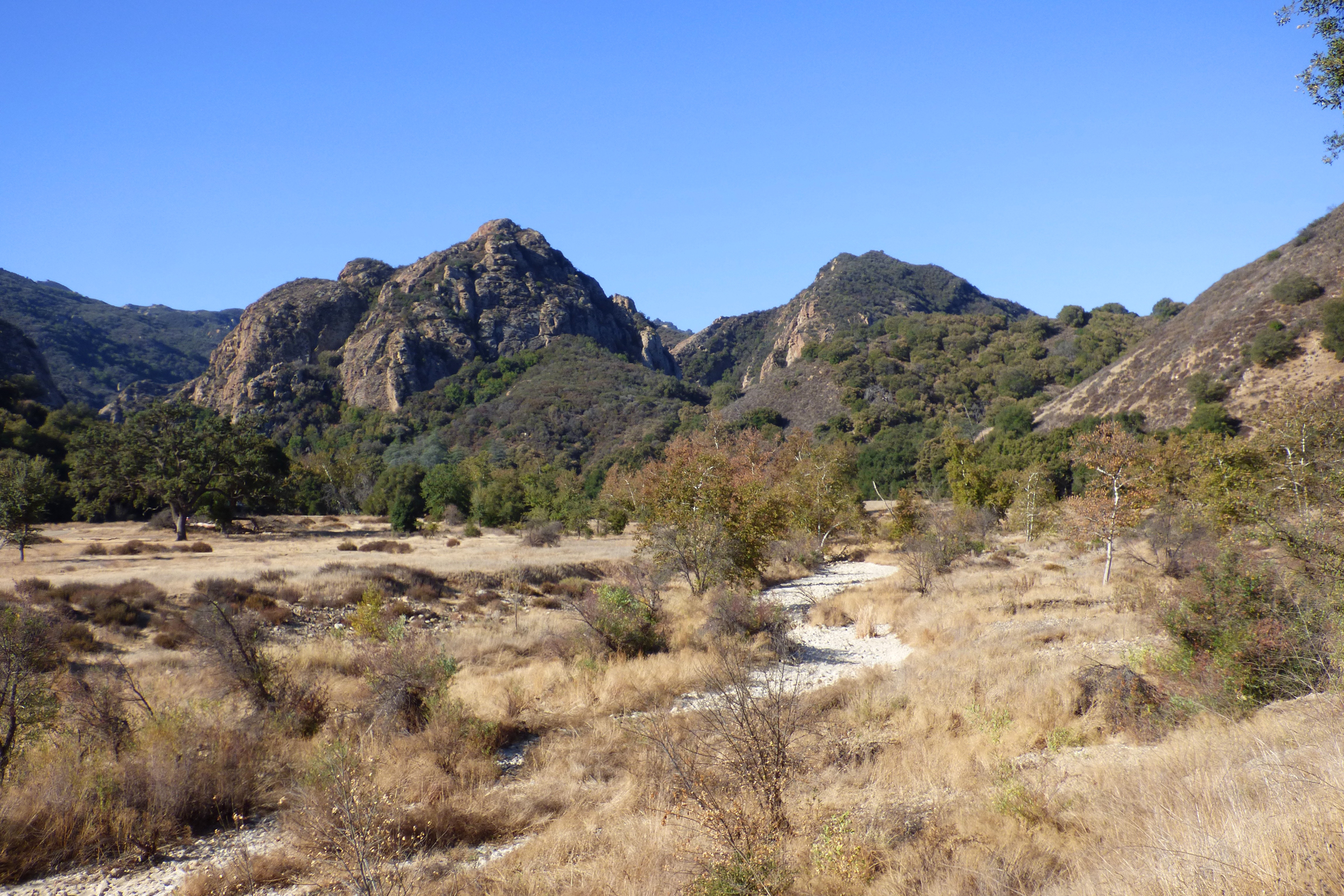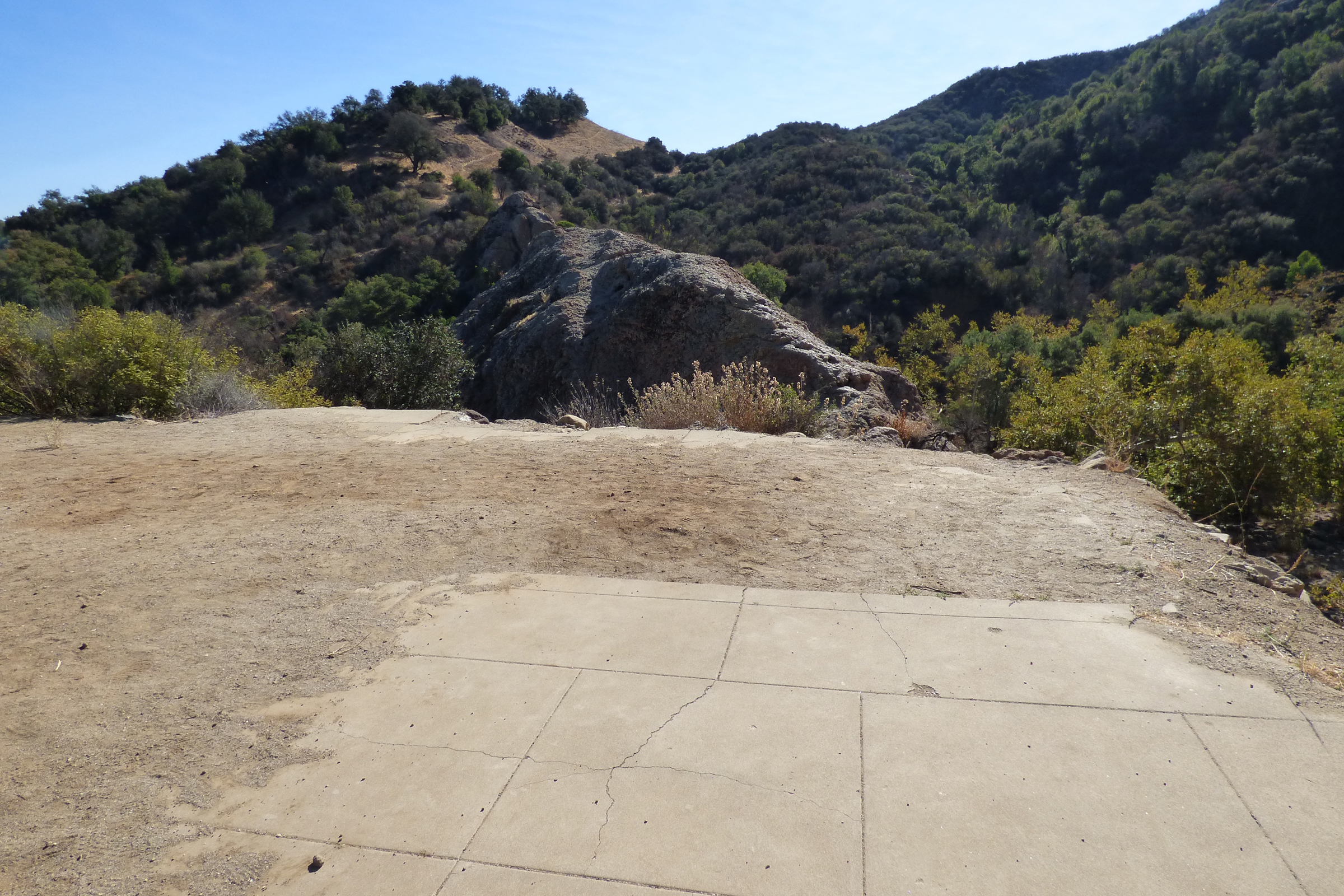Editor’s note: many of the locations discussed in this article have been impacted by the Woolsey Fire. Check the Santa Monica Mountains National Recreation Area website to check for closures before attempting to visit: www.nps.gov.
When Malibu Creek State Park was the 20th Century Fox Studio Ranch, it doubled for everything from Tarzan’s Africa in the 1930s, to the Welsh mining town from How Green Was My Valley in 1941. Mr Blandings eponymous “dream home” was built on the ranch in 1948. The house is still there, used by State Park staff. The TV series M*A*S*H was filmed at the ranch for over a decade. However, the most iconic film connected with the park is arguably the original Planet of the Apes.
Several key scenes of the film were shot at the Fox Ranch. Planet of the Apes turned 50 this year, inspiring film historian and park volunteer Mike Malone to lead a group of 40 film enthusiasts in search of cinema history.
When State Parks acquired the movie ranch in the mid 1970s, much of the concrete-and-plaster ape village set was still standing. Malone told the Messenger Mountain News that the “capital city of the simian nation” took a year to build. Today, the village has vanished, but Malone has a good idea where the set stood. He uses stills of the film to match the background to the actual location. The same sleuthing reveals the camera location for the scene that includes a chase through the cornfields, even though no physical evidence remains.
It can be challenging for a casual visitor to identify film locations without any trace of the sets, but one location that’s easy to spot is the paved and level area used for the giant cage set in the scene where actor Charlton Heston was imprisoned. The steps he runs up are still there, too. A quarter mile below, Rock Pool, a natural feature used in several films, still looks almost exactly the way it did 50 years ago, in the scene where Heston’s character, Taylor, swims before being captured by the apes.
The village and cage sites are both along the main Crags Road trail. The cage site is clearly visible as a cleared area. Turn off the trail to walk down the stone steps built for the movie. The Simian City set was built along the edge of Century Lake, a small, man-made reservoir, and along the ridge line. The best way to locate the site, once at the lake, is to use Malone’s technique, and compare the ridge line to a film still of the set—smartphones make this relatively easy.
From the main parking lot off Las Virgenes Road, Century Lake is a round-trip walk of around two miles. This is a wide, well maintained trail. The route has a couple hundred feet of elevation gain and little shade on a hot day, but is relatively easy.
The walk to Rock Pool is a shorter, more level walk, with plenty of shade. Because this is such an easy-to-access destination, and one that offers the promise of rocks to climb and a pool with year-round water, this part of the park is often crowded. It’s also one of the number one locations in the park for emergency rescues, as the rock climbing and jumping exploits that are a social media phenomenon sometimes go wrong. Go early in the morning or on a weekday to avoid the crowds and enjoy the sensation of being the only human on the planet.
WARNING: Pirate’s Cove, the secluded beach where a distraught Taylor encounters the remains of the Statue of Liberty, can only be safely accessed at low tide.
The cornfield site is at the end of the parking area, near the currently closed campground. Visitors can still get close enough to pause for a moment and imagine apes on horses pursuing the hapless human astronauts, or to visualize the director, actors, film crew, equipment, and dozens of extras in rubber masks required to make movie magic. The cornfield was grown specifically for the film shoot.
Participating in a guided tour led by a film historian is a treat, but it’s easy to take a self-guided tour. A complete Planet of the Apes Malibu Creek State Park adventure is about three or four miles and takes a couple of hours. Parking is $12 for the day in the main lot.
Fans of Planet of the Apes can easily combine a trip to Malibu Creek State Park with a visit to the location of the film’s shocking denouement at Point Dume State Beach in Malibu where the film crew built an elevated bridge to bring the horses and camera equipment in for the shoot. It’s easy to get an overview from the Point Dume Nature Preserve trail.
Park at the western end of the pay lot on Westward Beach Road for easiest access, or park for free along the road east of the parking kiosk. Sharp-eyed film fans can spot the “forbidden cave” in the cliff wall. Alas, it’s only a cleft in the rock in the real world.
Planet of the Apes debuted in 1968. It was directed by Franklin J. Schaffner, and starred Heston, Roddy McDowall, Kim Hunter, Maurice Evans, and Linda Harrison. The film was a tremendous success, and the franchise continues to be a major box office draw, but the original film, with its shocking final scene, and thought-provoking premise has earned a place in pop culture’s collective consciousness. It’s also a unique part of the film history of the Santa Monica Mountains.
For information on upcoming film-themed walks and other activities visit: samofund.org/calendar.
For more information on Malibu Creek State Park
For a scene-by-scene comparison of the film scenes and actual filming locations, check out film historian Herve Attia’s video on Youtube

